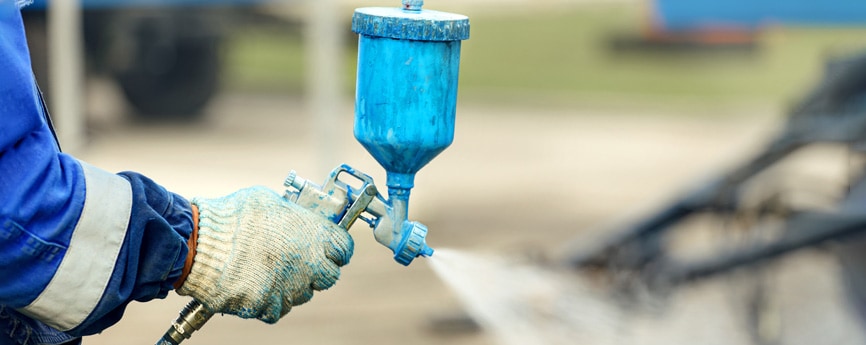How do we encapsulate corrosion with nanolayers?
[

]
[1] Such as plane failures or deaths at fairs due to fairground machinery damaged by corrosion.
What is corrosion?
Corrosion is an electrochemical process of deterioration that occurs with metal structures. The iron inside the steel reacts with the environment and loses its most valuable qualities; hardness or resistance.
Corrosion occurs when most (or all) of the atoms in a metal surface lose electrons due to interacting with oxygen. As the oxygen is reduced (gaining the electrons), it forms an oxide with the metal. This results in rusting on the surface in question.
There are different types of corrosion, the most common are:
Atmospheric
This type of corrosion causes major damage and in greater proportion. It is triggered by common corrosive agents in our atmosphere; oxygen, carbon dioxide, water vapor, and sulphur and chlorine compounds.
Galvanic
This type of deterioration is extremely common and occurs with the bonding of two different metals. These bond electrically when exposed to an electrolyte such as salt water. This results in electrical particles from one material being transferred to the other.
Concentration cells
It is also known as “crevice corrosion”. It occurs in small spaces and demonstrates that corrosion builds up faster and more aggressively in crevices and imperfections in a metal structure.
How do we combat it?
As it is a natural chemical process, it occurs frequently regardless of the quality of the infrastructure. Nanotechnology has found a way to stop corrosion and reverse its effects.
We do this through nanolayer coatings that we apply in the form of an aerosol to encapsulate corrosion. These nanolayers contain a polyurethane with exceptional properties; it uses moisture in the air to restore the surface damaged by corrosion. Let’s see how this innovation works step by step:
- We apply a nanolayer on the surface we want to protect.
- The varnish expands by capillary action in the metal structure and penetrates to the base of the corrosion.
- Once there, the polymer expels the oxides and recovers the microscopic pores in the metal structure.
- It also unleashes a molecular network that seals the pores of the surface and the nanolayer. This removes any chance of air or water penetrating into the material and causing further corrosion.
- The nanolayer becomes an integral part of the surface, providing permanent protection.
What are the advantages of our anti-corrosion coatings?
- They are a durable and cost-effective method for protecting metal structures. It lasts for up to 15 years without needing any other treatments to reinforce it.
- They are extremely resistant, they can be exposed to acids, salts and abrasives without losing their solidity, which means we can apply them to floors and surfaces used very frequently.
- They were originally created to protect steel surfaces and coatings, but have excellent adhesion to concrete, glass, foams, wood and other surfaces.
- They have properties against moisture and are resistant to UV radiation.
- They can be applied on surfaces covered by a base paint or old toxic paints, making the latter harmless to the environment after being sealed.
Can they be used for other applications?
These coatings work very well to prevent corrosion, but can also be applied to protect surfaces from many other hazards.
There is a nanolayer specially designed for surfaces that have to be kept submerged under the sea. We can also give surfaces non-slip properties, such as on the deck of a ship. It is even possible to use it to protect walls against graffiti.
Its versatility and other qualities show that this innovation should be applied more frequently since it resolves many everyday problems. Its use in a city, for example, reduces the investments needed to restore the finish of metal structures due to corrosion, scratches or scraping, and avoids having to repaint walls that are frequently vandalised.
Bibliography
CSIC. (27 de 02 de 2018). Nuevos Materiales. Obtenido de CSIC: https://rdcsic.dicat.csic.es/tecnologia-de-materiales-2/99-ofertas-tecnologicas/445-microcapsulas-anticorrosion-para-materiales-de-construccion
The Electrochemical Society. (s.f.). Corrosion and Corrosion Prevention. Obtenido de Preserving infrastructure: https://www.electrochem.org/corrosion-science/
TWI. (2 de 11 de 2010). TWL Ltd. Obtenido de Technical Knowledge: https://www.twi-global.com/technical-knowledge/faqs/what-is-corrosion#CausesofCorrosion
Univision. (7 de 8 de 2017). Accidente mortal en una atracción mecánica en la feria de Ohio fue causado por la corrosión acumulada, según el fabricante. Univision. Obtenido de https://www.univision.com/noticias/accidentes/accidente-mortal-en-una-atraccion-mecanica-en-la-feria-de-ohio-fue-causado-por-la-corrosion-excesiva-segun-el-fabricante
Talk to our team.
If you want to know more about our [i]solutions, contact us.

